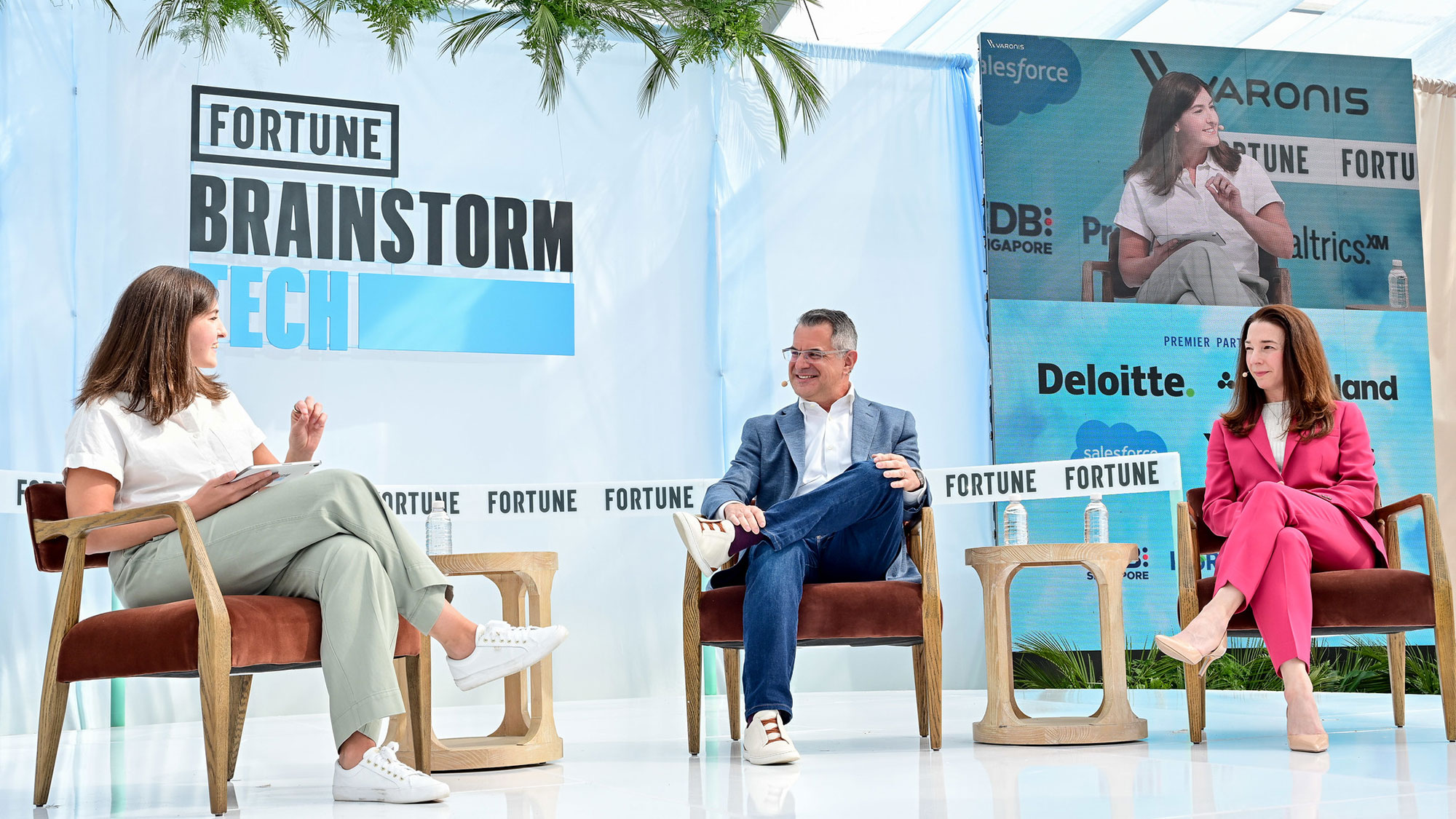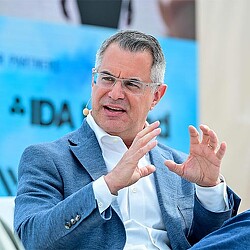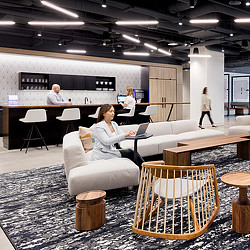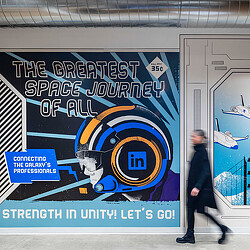Designing a New Way to Think in the Age of AI
Gensler co-CEO Jordan Goldstein speaks with Kristen Conry, Senior Vice President of Global Design, Marriott, about how AI is blending creativity with operations, storytelling with strategy, and vision with impact.

Every era of design is shaped by the tools of its time. Right now, artificial intelligence is one of the biggest shifts we have seen. It is changing the way we imagine, create, and even experience the world around us. Where we once relied on sketches and models, AI is letting stories come alive in real time. Spaces are no longer static. They are evolving narratives built through collaboration, creativity, and imagination.
At Fortune Brainstorm Tech, conversation touched on how AI is blending creativity with operations, storytelling with strategy, and vision with impact. For us, this is not about replacing people with technology. It is about expanding what is possible.
A Bigger Role for Designers
AI is giving designers a bigger stage and more responsibility. It is no longer just about drawings. It is about experiences. At Gensler, we are developing proprietary platforms that let teams and clients co-create in real time. With tools like digital twins and advanced visualization, we can simulate energy use, guest flow, or occupancy before a building even exists. Clients can see their space come alive instantly. That makes the designer less of a draftsman and more of a conductor: part storyteller, part strategist, part collaborator.
At Marriott, we are exploring how AI tools can both inspire and optimize design — unlocking new solutions, streamlining collaboration, and accelerating production. With a development model that spans thousands of owner and franchise partners, Marriott’s design must consistently deliver creativity and measurable value. While they are still in the early stages of integrating AI into their design ecosystem, Marriott is actively working with partners like Gensler and exploring emerging capabilities with tremendous potential to transform the collaborative creative process. By leveraging high-tech tools, Marriott aims to enable high-touch experiences, bringing clarity, speed, and creative impact for owners and guests alike.
Creativity Meets Operations
The real magic is how AI connects the bold idea with the practical plan. At Gensler, our tools compress what once took months into days, making it possible to co-create concepts with clients in real time. For Marriott, the opportunity lies in designing a process that balances guest experience, brand standards, and operational efficiency. AI can help build a flexible framework with stakeholder priorities as guardrails, ensuring every solution, whether bespoke or prototypical, delivers on what matters most.
That balance between creativity and operations is where the potential shines. Designers, clients, and owners can explore options earlier, see the impact of choices sooner, and move ahead with confidence. The result is design that is not just faster but smarter.
Storytelling as the New Language
Perhaps the most exciting shift is how design can now be communicated. In the past, static drawings often fell short. Gensler is using AI to create cinematic storytelling tools that allow clients to see their vision evolve as if it were unfolding on screen. This makes the process more collaborative and immersive, helping clients make decisions on the fly and stay deeply engaged in the story of their space.
That is good for everyone. Designers have more freedom to explore. Clients gain clarity and confidence. And guests ultimately experience places that feel more authentic, human, and memorable. Storytelling is not just the end product anymore. It is becoming the process itself.
Looking Ahead
AI is a journey no one can take alone. Its promise lies in partnerships, bringing different perspectives together and designing for both efficiency and meaning.
The future of design is fast, fluid, and deeply human. With AI as a creative partner, we are not just designing spaces. We are designing new ways of thinking, working, and imagining what the built environment can be.
For media inquiries, email .










